The temple is a flat temple, this means all parts are on ground level and the central shrine is surrounded by enclosure walls. Ta Som is a medium-sized monastic complex, smaller than the contemporry similar Bayon-style temples of Banteay Kdei, Ta Prohm and Preah Khan, comparable in size to Ta Nei and Banteay Thom.
As mentioned, Ta Som a typical structure of the era of the most prolific temple builder in Angkor's history, Jayavarman VII (1181- ca. 1218). Not all temples dating from the reign of this king have towers with those impressive depictions of giant Buddha faces this Angkor period is famous for, but Ta Som is indeed one of Cambodia's face-tower monuments.
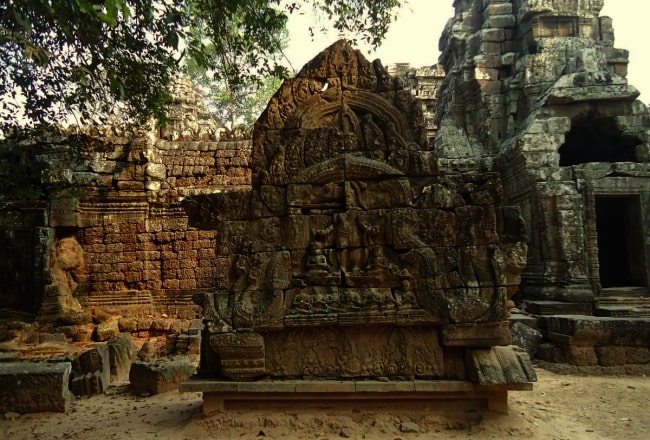
Face towers as exterior temple gateways (3rd enclosure)
Altogether eight colossal faces can be seen at Ta Som, four on either side of the two outer temple towers (Gopurams of the third enclosure), these face towers forming the eastern and the western gates of Ta Som. As usual, the East Gopuram, which is now famous for its strangler fig, originally was the main gate of the sanctuary.
Today’s visitor arriving at the car park at the Grand Circuit, however, will start his walkabout from the opposite side, entering the temple area via the western face tower. The colossal Buddhist faces of Ta Som are of a smaller scale than those at the city gates of Angkor Thom. Just below the face of the west gate, the visitor can see a first example of a carving representing Bodhisattva Lokeshvara adored by several smaller followers in a lower register.
Designed to be entered from the east, Ta Som is surrounded by a moat and enclosed by altogether three laterite walls, remnants of a moat can be seen at the eastern gate. The outer (third) enclosure measures 240 m in length from face tower to face tower and 200 m in width.
Probably, this exterior enclosure wall made of laterite is a later addition from the reign of Indravarman II in the first half of 13th century, although the Buddhist faces of the entrance towers are more likely from the original Bayon period of Jayavarman VII.
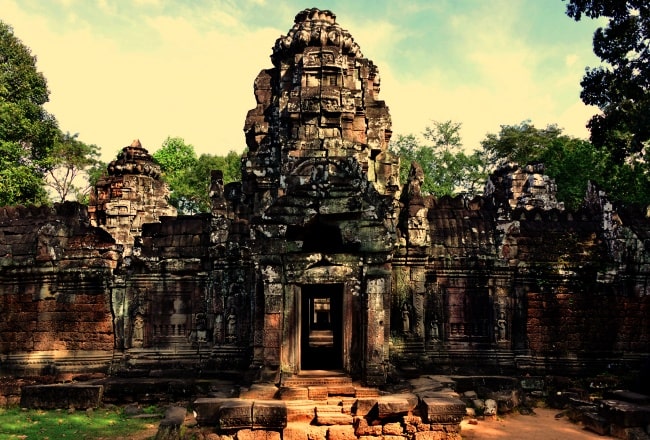
Excavated Lokeshvara pediment
The second enclosure has ist own moat inside its laterite walls. When crossing the gateway of the second enclosure, which is wider but less high than the face tower, the visitor can enter the main shrine of the first enclosure. But we recommend turning right and first go to the east gate.
During the restoration works, new sculptural decorations have come to light, which were buried in the ground. Originally, they had decorated the pediments of the temple. The most imposing ones are pediments with a Lokshvara figures, some of which are now placed one the ground.
One such unearthed and restored pediment carving, presumably the most beautiful one, is placed in front of the south wall of the main complex. You will not miss it when surrounding the temple proper, passing it at its southern side.
The Bodhisattva in the center is venerated by two kneeling Asura demons, dressed like royals, and another row of Asuras below them. Their hands depict the gesture of prayer and devotion. The Bodhisattva Lokeshvara has inapproportately short legs.
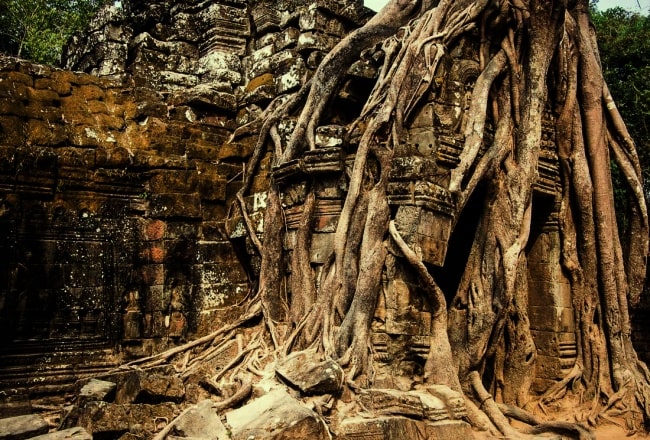
East Gate with strangler fig (3rd enclosure)
The eastern face-tower is one of the most often photographed Khmer monuments. The tower is crowned by a superb example of Angkor's world-famous stone-cracking trees, a quite dramatic sight. The strangler fig still stands upright, but it died in the 1970s.
This means, it does not grow any more and due to starting decomposition it will fall down in a not too far away future. So, dear travellers intending to visit Cambodia, hurry on to see the spectacular tree still standing upright on the monument!
The roots of the tree cover another pediment carrying a Lokeshwara relief, but it's only partli visible. The wider parts of the panel which can still be seen is the right bottom of the panel showing three rows of adorants. A similar pediment is on the northern side and a smaller one faces south.
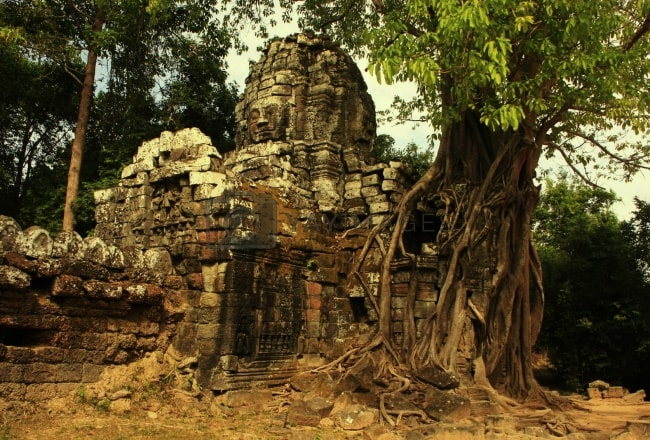
Eastern Gopuram 2 (2nd enclosure)
Returning to the core area of the sanctuary, the visitor, of course, has to pass the eastern gateway of the second enclosure again. It’s worth stopping here for a while to detect some of the more hidden Buddhist carvings, since within the temple of Ta Som only this second eastern Gopura has depictions of the ‘Churning of the Ocean of Milk’, which is otherwise a very common theme in the Bayon style.
The northern side of the causeway to the west of this second Gopura carries a long narrow frieze representing this famous scene, in a stretched version. The same subject is carved, in a shorter space, on the pedestal base of the eastern door of this gate. Thisminimal version of the scene is similar to that one of Tonle Bati to the south of Phnom Penh.
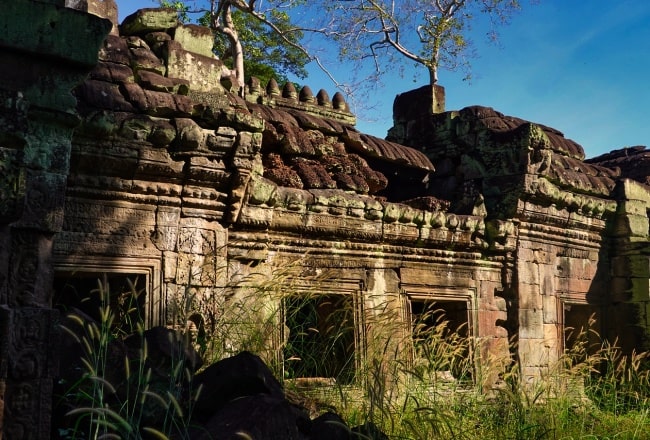
Courtyard of the temple proper (1st enclosure)
Ta Som's temple proper has laterite galleries surrounding the temple courtyard (inner enclosure), encompassing a cruciform Prasat sanctuary and two so-called libraries built of sandstone. It is much like a miniature version of Ta Prohm, or more precisely, like a copy of its northern and southern side temples.
The first (inner) enclosure is 30 m long and 20 m wide. This core section of the temple consists of a central cruciform sanctuary with porches at each arm surrounded by four corner pavilions. Two small libraries sit on either side of the eastern entrance path.

Stone carvings of the temple proper (1st enclosure)
The carvings at the temple proper of Ta Som are in a relatively sound condition, although you will easily find many of them being defaced by Hindu fanatics – just like at almost all Buddhist temples constructed in the Bayon period. Ta Som‘s stone carvings are of higher-quality craftsmanship than those at other contemporary temples. Bayon-style panels usually appear to be worked out more hastily than those of previous periods. There are some remarkable features of Ta Som:
- The Devata (often called ‘Apsara’) carvings show an uncommon individuality compared to other Bayon-style sculptures, although not coming close to the uniqueness and perfection of Devatas or Apsaras from the previous Angkor Wat period.
- As mentioned, the Northern Gopuram’s northern pediment, which is of similar size as the one outside the first enclosure on the opposite southern side, was reconstructed recently by the WMF and the APSARA Authority. In contrast to its counterpart on the opposite side of the temple proper, the Lokeshvara statue in the centre of the relief was destroyed by iconoclasts.
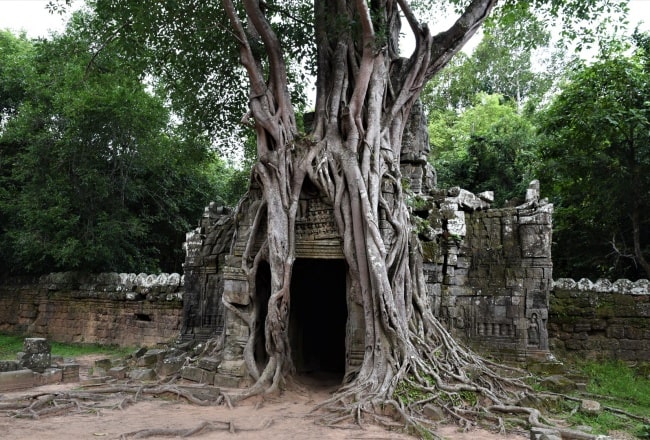
- Well-preserved in situ reliefs are found in the gallery of the temple proper (first enclosure), too. For example, the restored south pediment of the north Gopuram (inside the first enclosure or central courtyard) shows a smaller Lokeshvara, with four praying figures on lotus buds at his feed. The stems of the buds are depicted, too, emerging from the pond on a single stem. The standing Lokeshvara is totally defaced.
- In the south-west section of the courtyard, there are more examples of Lokeshvara carvings on the ground. An excellent one has a defaced Buddhisattva between Vishnu on the left and Brahma on the right, over two rows of worshippers.
- Besides the pediment carvings, there is a pillar with a peg on the top. The symbolism is unknown. Similar stelae are found at contemporary Bayon style temples, e.g. two at Preah Khan and one at Banteay Prei.
- On the north-facing door of the southern Gopuram is a pediment the upper part of which has just the traces of the Bodhisattva being tortured over two rows of worshippers. It’s not easily recognizable. There are better carvings depicting the tortured Bodhisattvas at Preah Khan. This is a less common theme in Khmer art, but actually therea are some more temples from the Bayon period with carvings depicting a Bodhisattva being tortured, namely Ta Prohm, Banteay Kdei, Preah Palilay, and Banteay Thom in Angkor as well as Wat Nokor in Kampong Cham and Ta Prohm of Tonle Bati. Usually the tortured Bodhisattva is seated in the gesture of meditation, which is called Samadhi Mudra. The theme of the ‘tortured Bodhisattva’ or ‘maltreated Lokeshvara” is probably intended to emphasize the imperturbability of an enlightened being during his meditation.
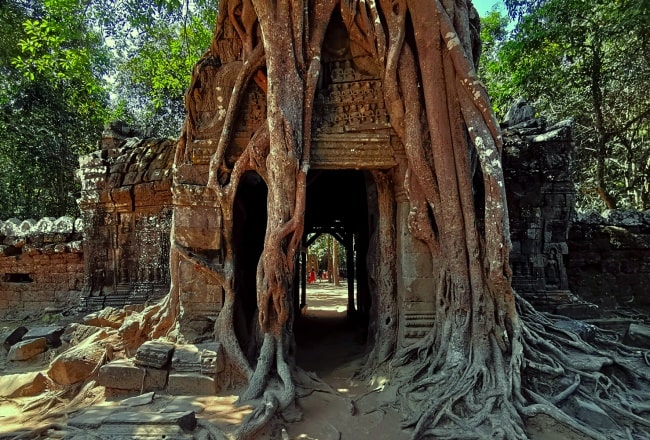
- The west-facing pediment over the eastern gopura has an unfinished Lokeshvara venerated by two figures with simple crowns, perhaps depicting royal rishis. In the register below are several more royal figures, shown in praying attitudes. Beside them is a bull whose presence is somehat puzzling. Although he is depicted as a Zebu and thereby seems to represent a typical Nandi, he could also be sacrificial animal. Integration of Shivaite elements in Buddhist art depicting Bodhisattvas is quite common, but a Nandi, the sacred animal of Lord Shiva, is usually not seen in Buddhist carvings.
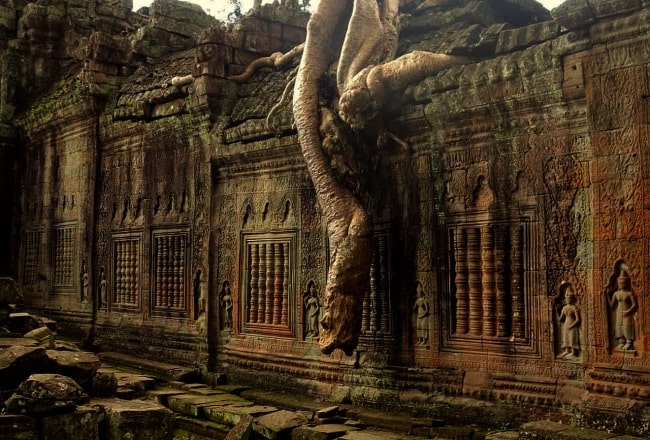


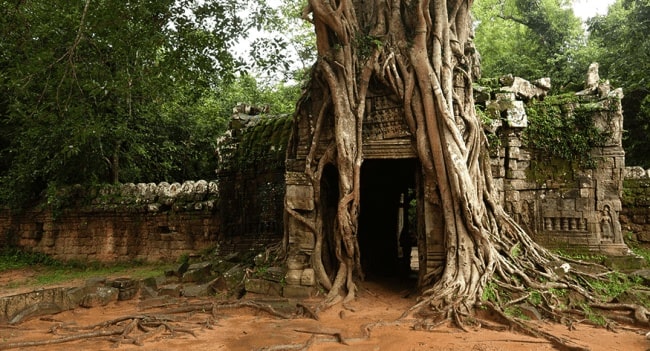

 23/12/2025
23/12/2025







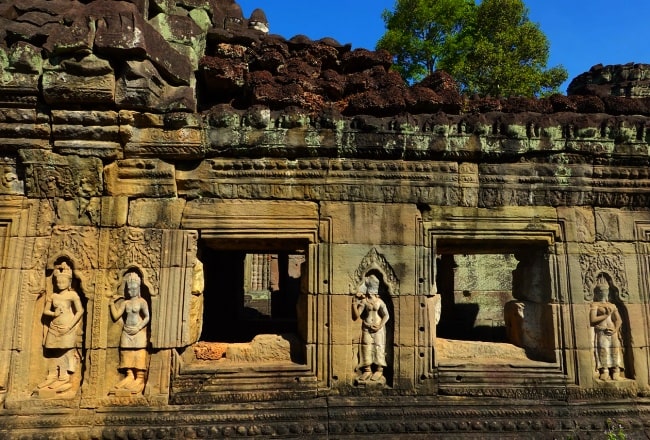
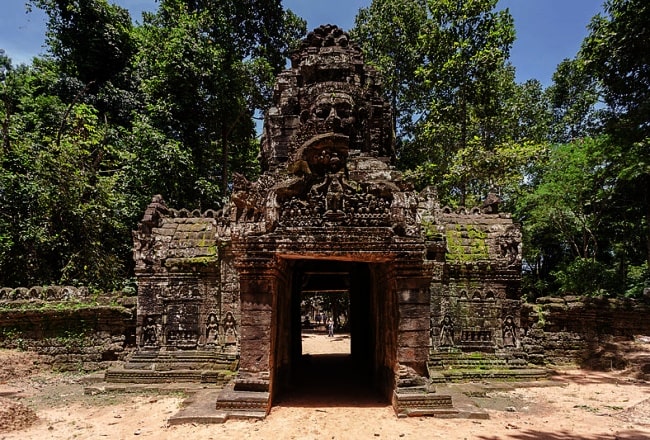
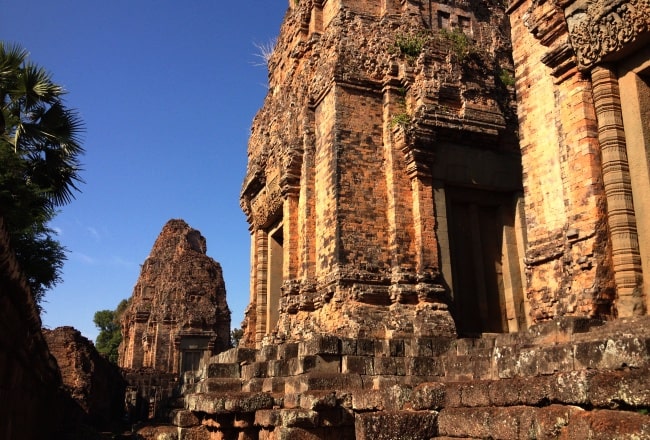
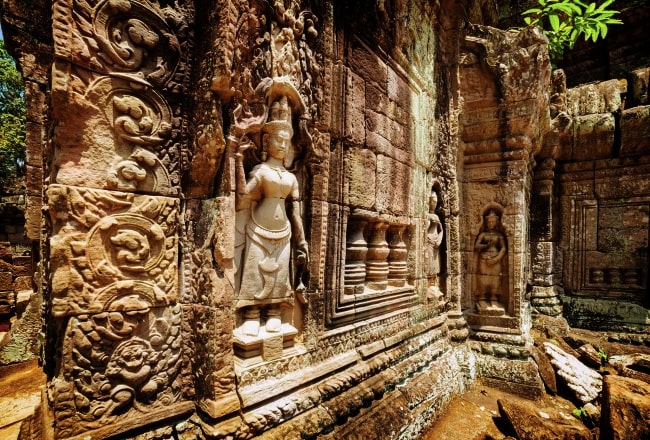
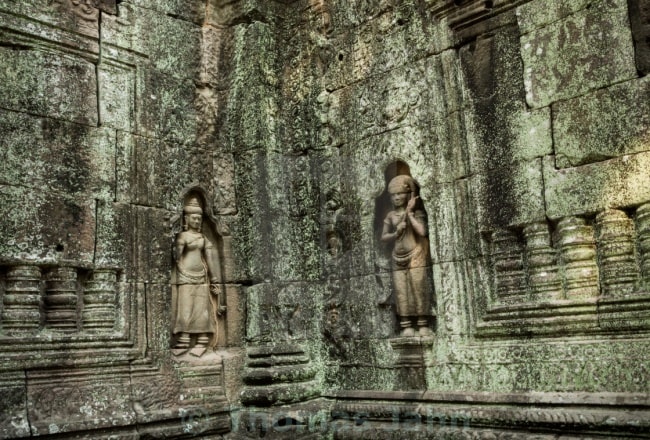
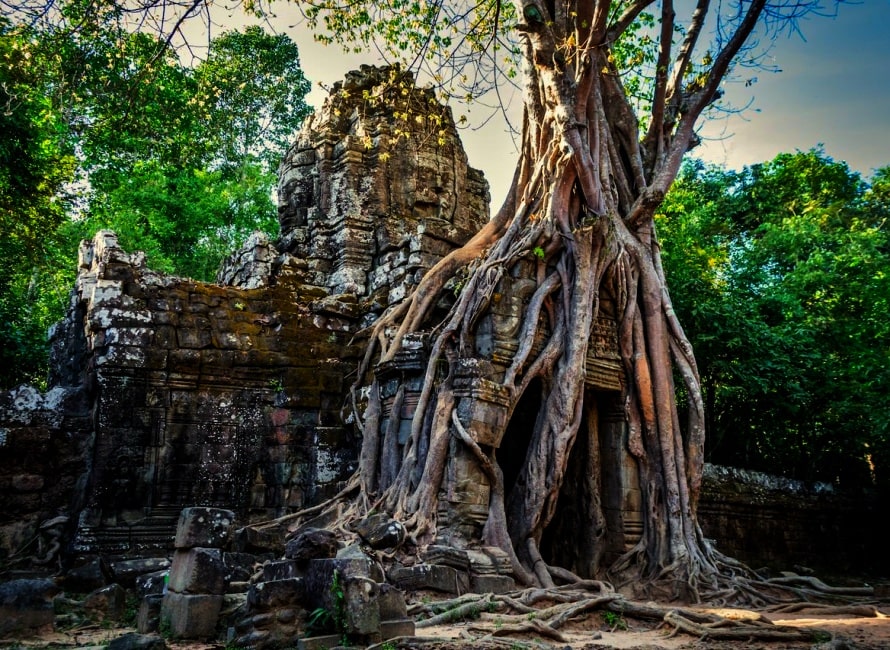
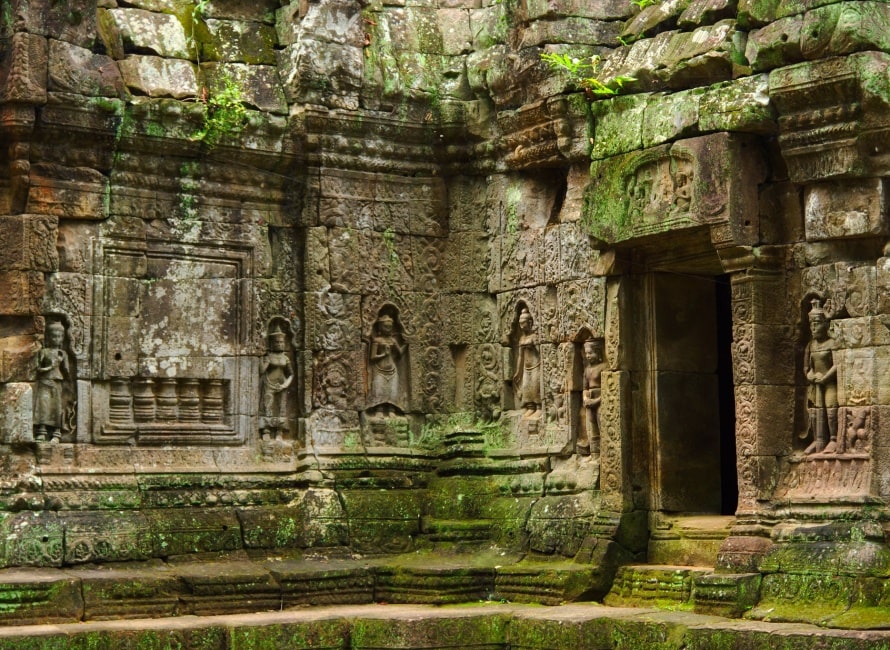
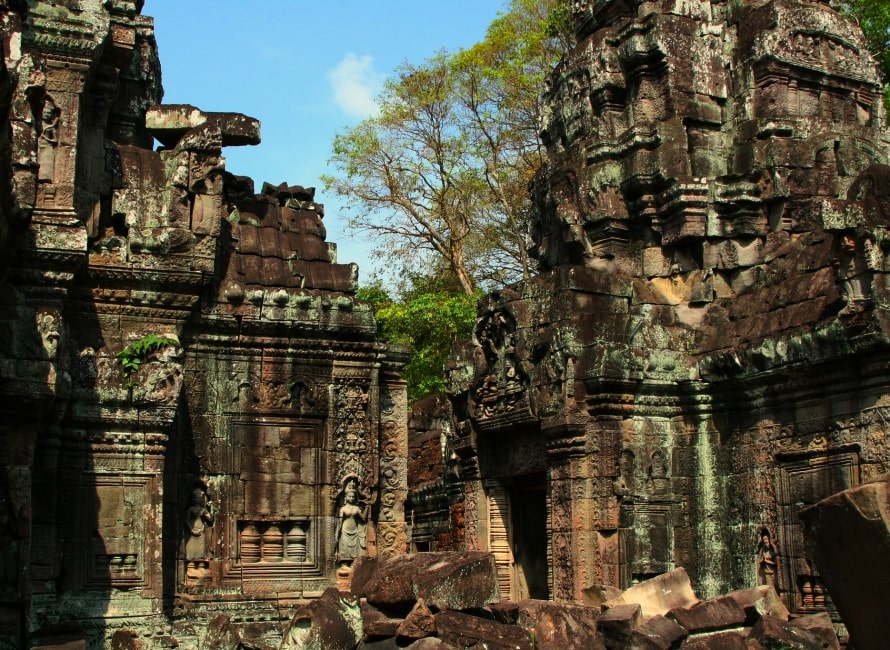
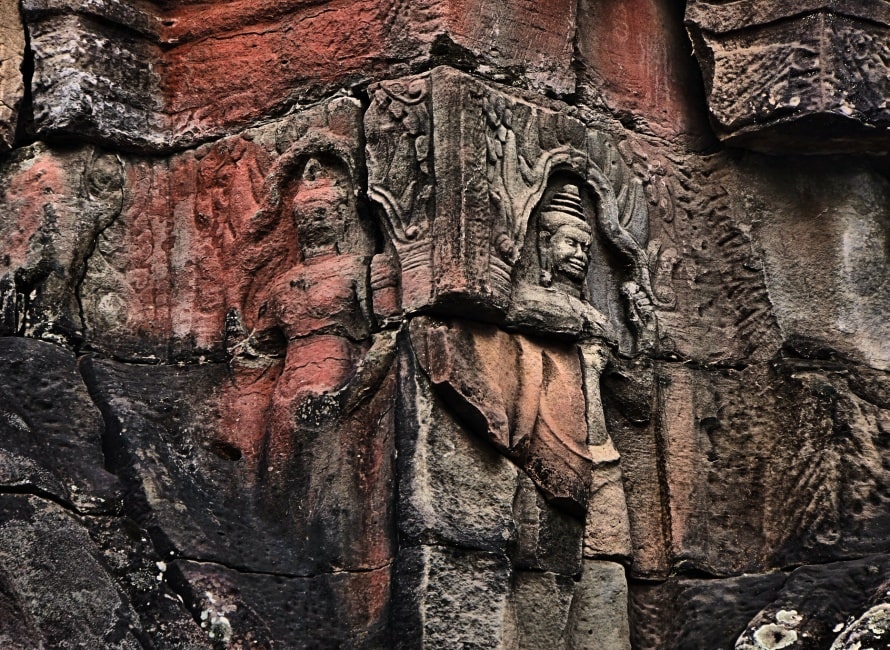
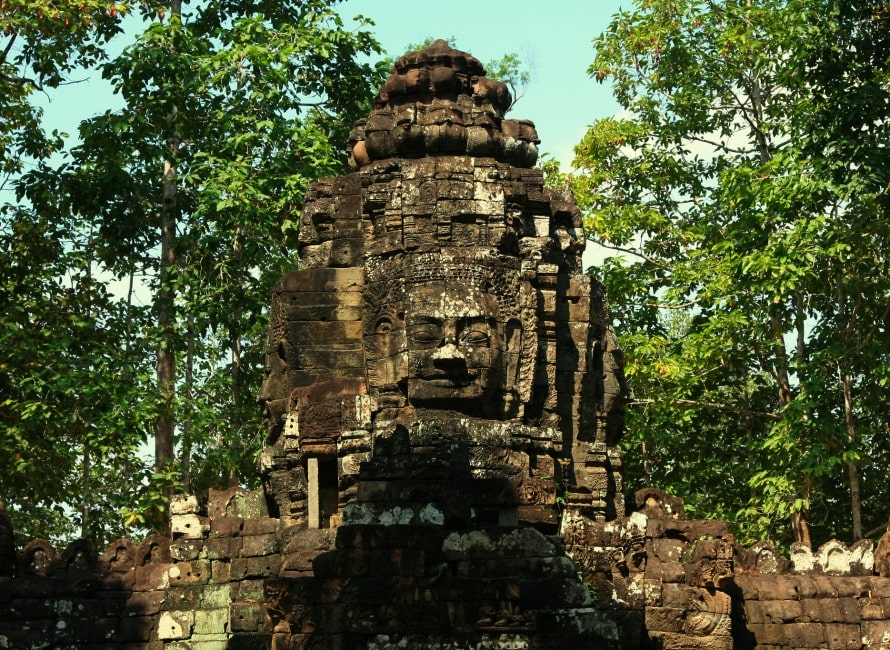
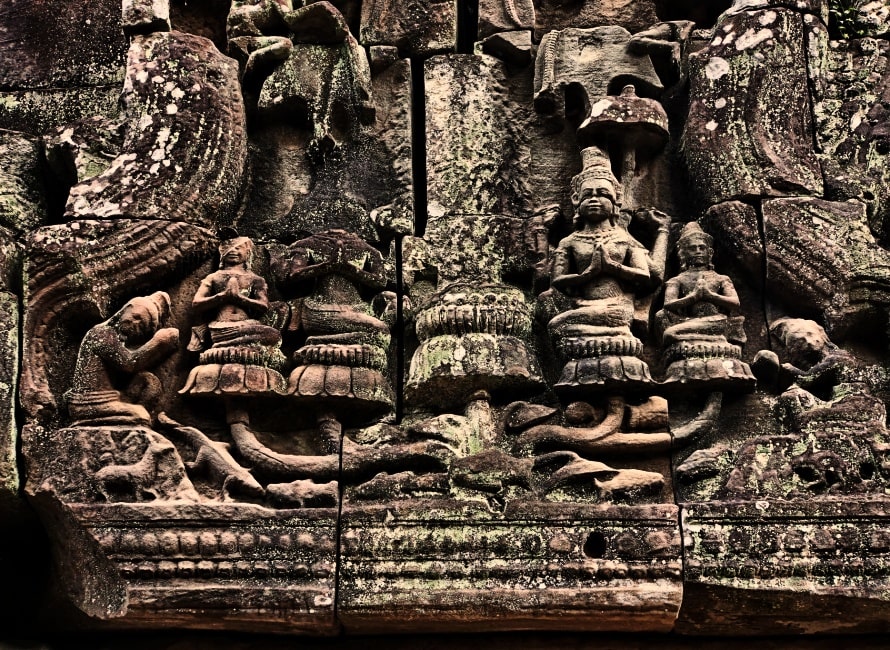
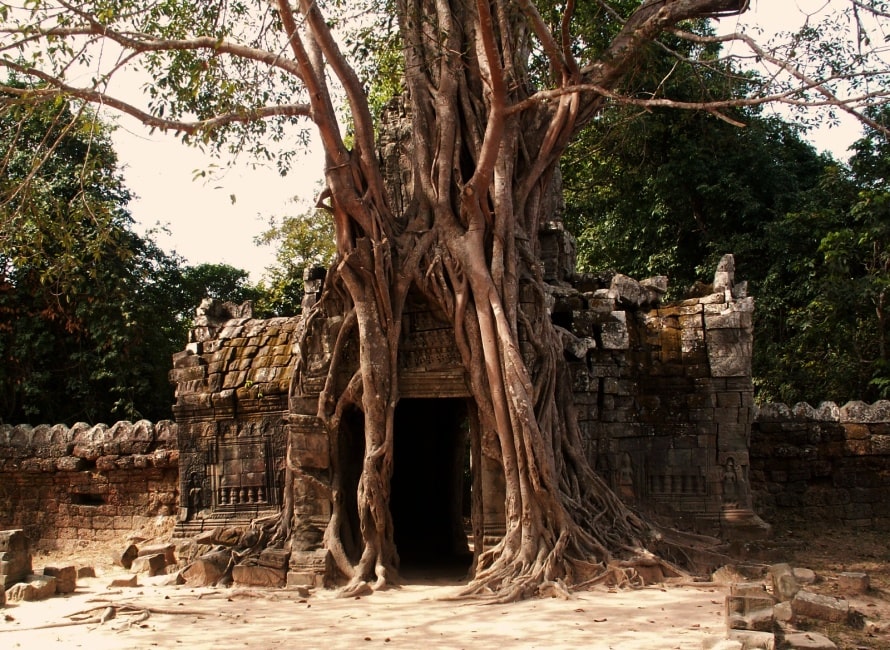
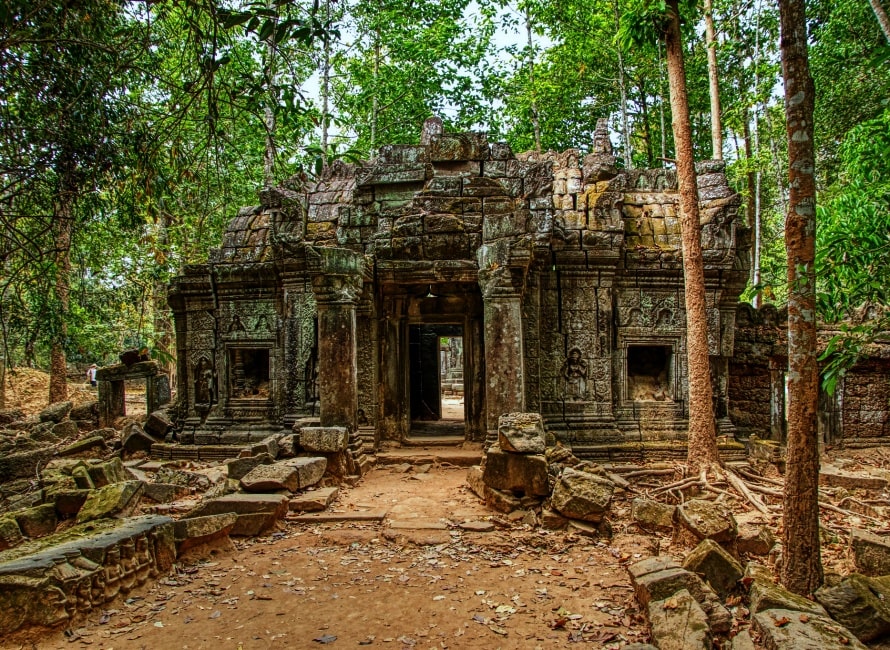
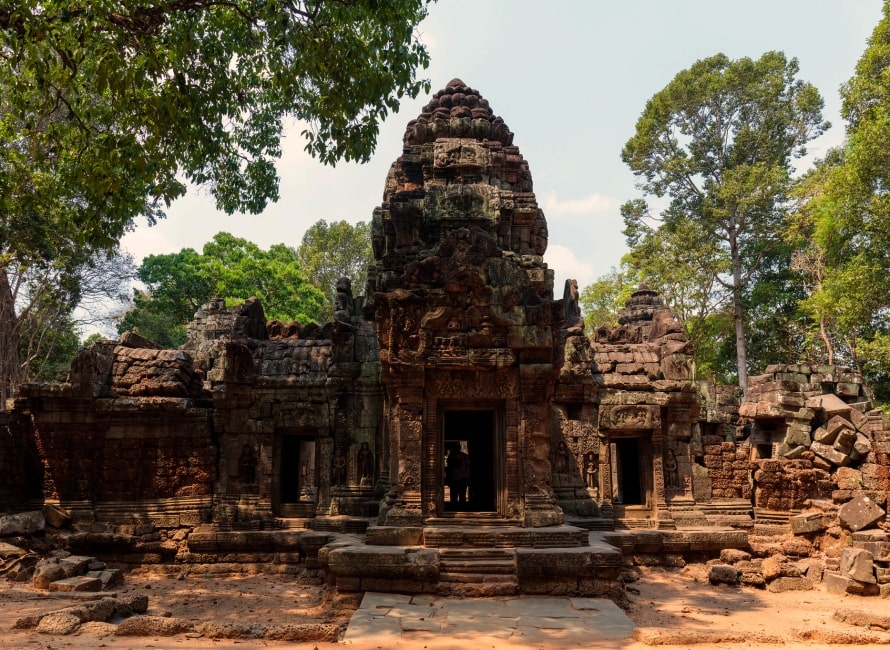






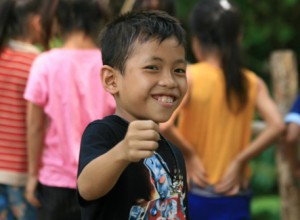













Jolie LIEMMy name is Jolie, I am a Vietnamese girl growing up in the countryside of Hai Duong, northern Vietnam. Since a little girl, I was always dreaming of exploring the far-away lands, the unseen beauty spots of the world. My dream has been growing bigger and bigger day after day, and I do not miss a chance to make it real. After graduating from the univesity of language in Hanoi, I started the exploration with a travel agency and learning more about travel, especially responsible travel. I love experiencing the different cultures of the different lands and sharing my dream with the whole world. Hope that you love it too!